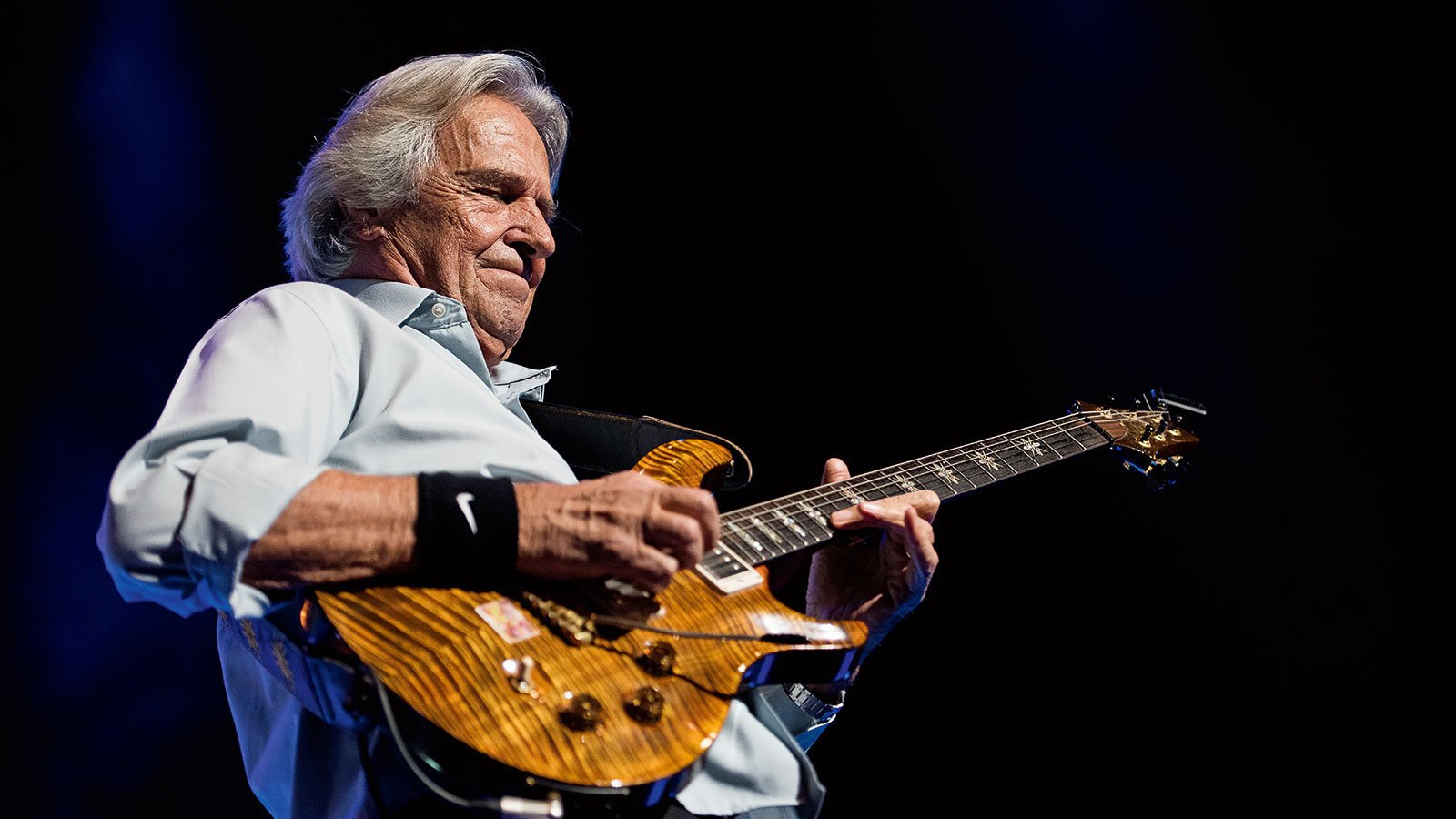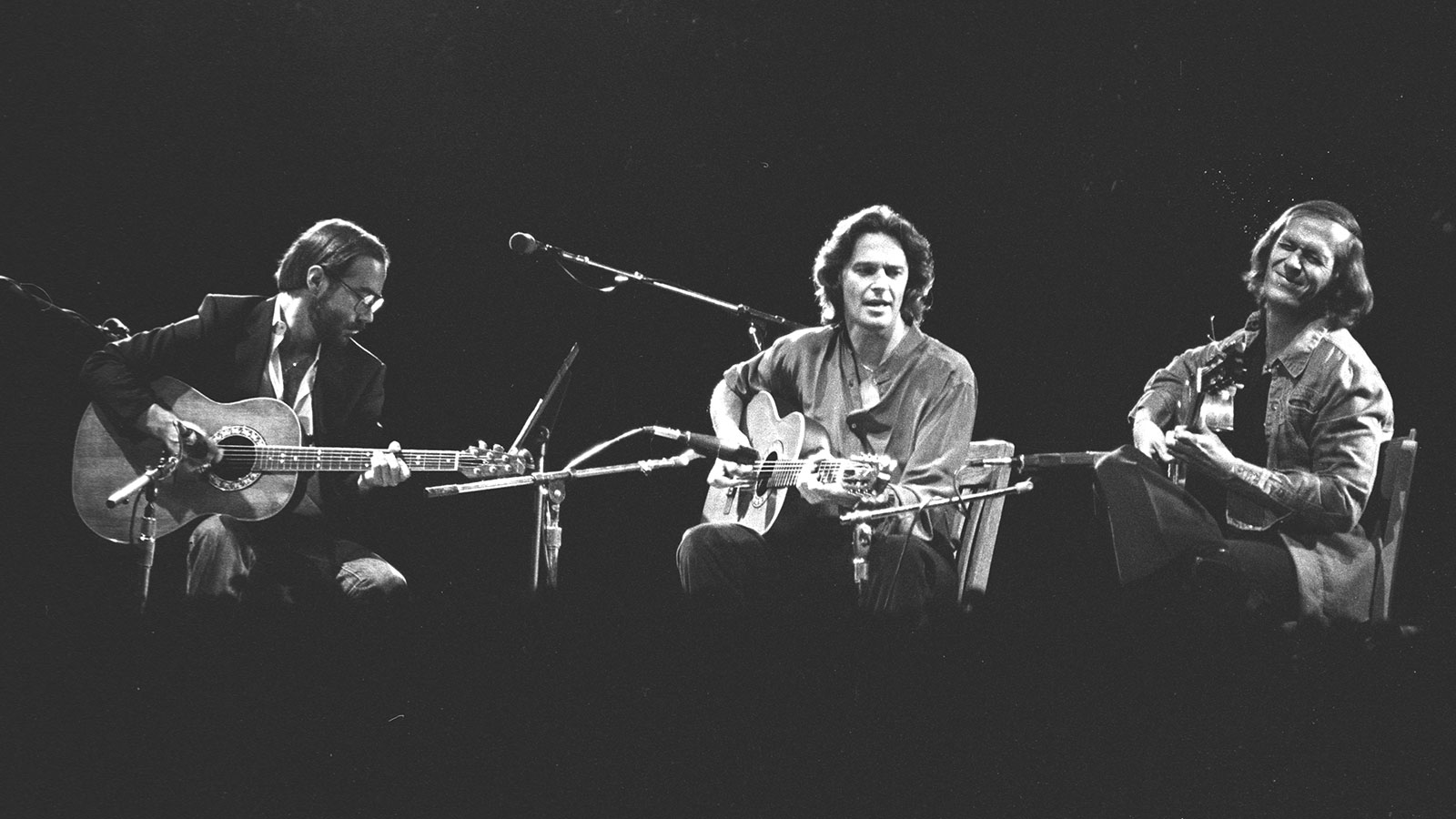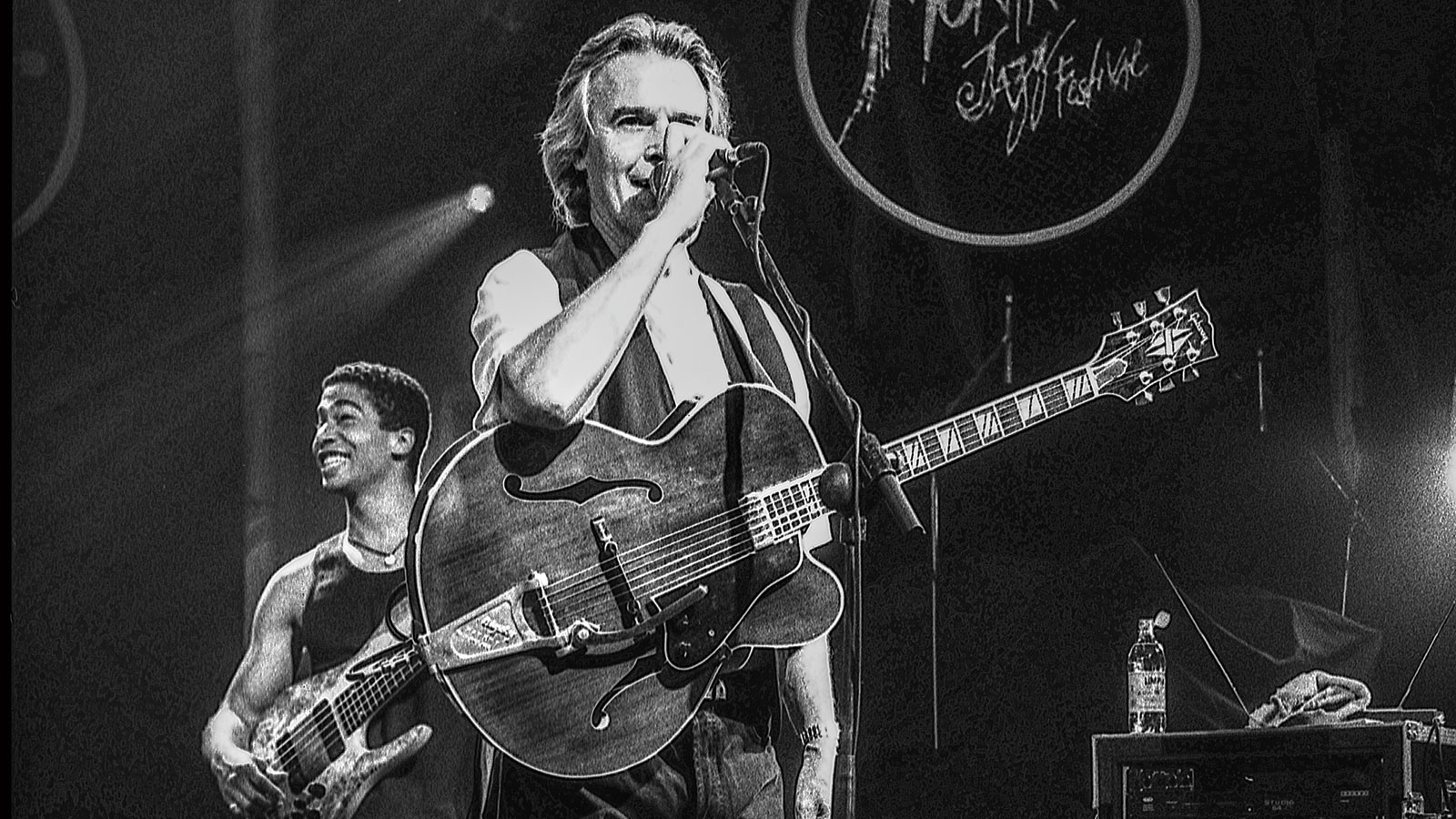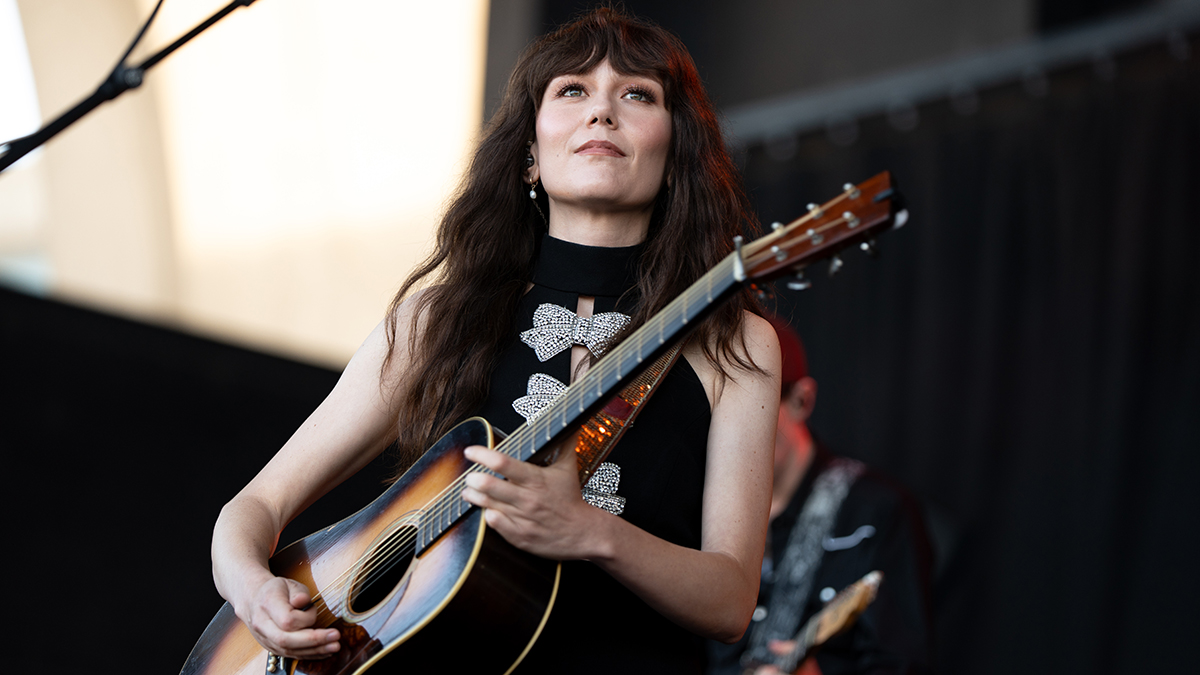John McLaughlin: “I fell in love with the guitar and even started sleeping with it, that’s how much I loved it”
The jazz-fusion guitar legend shares stories, reflections and life lessons from a career spent pushing the envelope

Jazz-fusion pioneer John McLaughlin has had an extraordinary playing career. Here he looks back on his early days as a guitarist and the events that led up to the formation of the legendary Mahavishnu Orchestra.
Music Came Calling
“I was born to a mother who was an amateur violinist. She tried to teach me violin – unsuccessfully, because I couldn’t stand the sound I was making – so I asked her if I could study piano instead.
“I would have been about seven or eight at the time. She was a classical violinist and the only music I heard in the house was classical music. I started studying piano, and it was, of course, classical.
“I am the youngest of five kids and by the time I was 11 I’d been studying piano for about four years. That would have been 1953, which was when the blues boom swept across the UK. Two of my brothers at university got caught up in this boom, and the oldest one bought a guitar.”

Birth Of The Blues
“I wasn’t really paying any attention to what my brother was playing because it was folk music and I was playing Mozart and Beethoven. He got bored with it after six months and the guitar went to my siblings, until, eventually, it arrived in my hands. One of the other brothers showed me a D chord and it was a revelation.
“I fell in love with the guitar and even started sleeping with it, that’s how much I loved it. My family saw how passionate I was about it and started buying me albums. The first one, I think, was a 1954 recording of Muddy Waters with Little Walter playing acoustic slide guitar, and this opened up the door to the blues. They brought in Big Bill Broonzy, Lead Belly, Son House, the great Mississippi blues players.”
The Melting Pot
“After about 18 months, [my family] brought home flamenco records, guitar records, of course, because they wanted to educate me. The impact of this manifested itself in this association I had with Paco de Lucia from 1978.
All the latest guitar news, interviews, lessons, reviews, deals and more, direct to your inbox!
“From there they brought me albums by Django Reinhardt with Stephane Grappelli, the Hot Club de France, and then, when I was 16, I heard Milestones by Miles Davis. This music captured me. And, well, that’s really how I got into the guitar.
All I wanted to do was play guitar. I was not very good at school because I was just playing the guitar all the time
“By that time, all I wanted to do was play guitar. I was not very good at school because I was just playing the guitar all the time. I think I was 19 when I arrived in London, so in the early 60s, probably around 1962 to ’63, would be when I started playing with Georgie Fame & The Blue Flames at The Flamingo Club. That was a great gig because I loved Georgie.”
The Mighty Organ
“The Blue Flames were the beginning of my association with the Hammond organ. In the 60s, the Hammond organ trio – which was Hammond organ, guitar, and drums, no bass – was extremely popular.
“A lot of great guitar players were in those bands. I’ll never forget hearing George Benson in the mid-60s playing with Brother Jack McDuff. He is a great guitar player and he was playing great guitar already in the mid-60s.
“Then there was Grant Green playing with Larry Young, Wes Montgomery with Jimmy Smith... From Georgie Fame I moved to The Graham Bond Organisation where Graham’s playing Hammond organ with Ginger Baker and Jack Bruce playing acoustic bass, and Ginger playing his homemade drums at the time. It was a very fertile period.”

Pretty Flamingo
“This iconic person known as Alexis Korner, who was a blues player, was a generation above all of us, but he loved to play with jazz musicians. He had everybody in this band, whether it was Mick Jagger or Charlie Watts or Ginger and Jack, me, and Cyril Davies playing great blues harp and Dick Heckstall-Smith on sax.
“That’s where I first met Eric Clapton, after a late-night session. He came down with some other players to the Flamingo after midnight, but we didn’t really get to know each other until many years later, probably in the early 70s. Subsequently, of course, he graciously invited me to some of those charity Crossroads Festivals.”
The Hendrix Factor
“I was very impressed when I heard Eric play and, to me, I think he had a very powerful impact on Jimi Hendrix when Jimi came over to Britain in the mid-60s. Then Jimi took it that one level higher.
“That was a real revelation for me, to hear this kind of guitar, because by the time I was playing with Graham and Ginger and Jack it was more intense, it was more raw. It was like raw R&B, but it was really a great pleasure to play with these guys, great players.
The way Jimi used distortion was amazing. You only have to listen to Star-Spangled Banner. For me, it’s a total work of art
“I wasn’t happy with the kind of classical jazz tone. It’s not that I’m against it, but I was listening to Coltrane and sometimes he’s playing two notes at the same time, almost in a distorted way.
“When I heard Jimi, I equated him with the work Coltrane was doing with the saxophone because the way Jimi used distortion was amazing. You only have to listen to Star-Spangled Banner. For me, it’s a total work of art.”
Getting A Sound
“Then I got a bigger amp, and I’m trying to tweak it up. I want to get a richer sound. I want more harmonics in the tone. This is basically what distortion does – it gives you extra harmonics, if it’s a good amp, of course.
“I had my own jazz group: John Surman on saxophone, Dave Holland on bass, Tony Oxley on drums, who was also in the Gordon Beck Quartet.
“Then I spent about 18 to 20 months as a studio shark, and there were some nice recordings. I remember doing a live jazz trio recording with Danny Thompson from Pentangle, and Tony Robinson on saxophone; we did some live BBC recordings.
“I did one or two nice things as a studio shark, albums here and there. I did a movie score with Burt Bacharach and I started to make some money, but I was suffering musically. I was really suffering, and I just pulled out.”
Seeking Freedom
“I moved to Antwerp and started playing with this more freeform band, led by this German vibes player, Gunter Hampel. I became a little bit poor again, but I was happier, and I was touring around because from Belgium you can go into France, Germany, Holland. It was nice to feel that. I was hanging out with Dave Holland a lot when I would come back to London.
“One day he said, ‘Jack DeJohnette is in town with Bill Evans, the piano player... I saw him last night and he wants to jam tomorrow.’ So we went and there was just Jack playing drums, Dave on bass, and me, guitar. Jack recorded it on one of these ‘Mission Impossible’ machines that were around in the mid-60s.
“When he was back in New York, Tony Williams, who was drumming with Miles Davis, said he’s planning to leave Miles and wanted a trio, a Hammond organ trio, and does Jack know a guitar player? And Jack played him the tape.”
Measured By Miles
Miles Davis was calling me at least twice a week – can I just drop by his house and bring the guitar?
“I ended up in New York at the invitation of Tony Williams, not Miles. But I met Miles the same day because Tony had to finish off a week’s work with him at the Baron club in Harlem. Miles came right up to me and said, ‘We’ve got a recording day tomorrow at CBS, bring your guitar,’ out of the blue. He’d been my hero since 1958, and the following day was the recording of In A Silent Way. Somehow I passed that baptism of fire. But on top of that, Miles was calling me at least twice a week – can I just drop by his house and bring the guitar?
“This went on for several months, where I really got to know him. He’d just done a decade of the most amazing jazz music, but he wanted to break out. He wanted more blues and he was looking at me with all the years of playing with R&B bands. In addition, in the 60s, I was playing with funk bands, soul bands... There was one band, The Peppermint Twisters. Oh, man [laughs].”
Breaking Out
“James Brown was a revelation and Miles loved that. The result of that, of course, became Bitches Brew, which became a certified platinum album. Amazing, really. When I wasn’t playing with Tony, I was playing with Miles, or recording with him.
“It must have been around October or November at the latest, in 1970, after a gig in a club. It was just the two of us, and I hadn’t played good at all. I had a very difficult night – I couldn’t get it together.
“Out of the blue, Miles said, ‘It’s time you formed your own band.’ And I took him very seriously at that. So the ideas for the Mahavishnu Orchestra were already brewing for at least a year prior to it actually happening – because, with Tony, he really liked how I wrote music, the compositions.”

Under Orders
“With Tony, I was very fortunate because he encouraged me to write music, and a lot of that Mahavishnu music came to me during this period playing with Tony. I’d just done one of Miles’s dates, it’s called Jack Johnson, which is basically a jam.
“This is where I met Billy Cobham, and we got really, really tight right after that session. I had started the jam, and I was using chords that eventually became The Dance Of Maya. I was already in that vein.
I was asked to join Weather Report but I said, ‘That sounds really great, but I’m under orders from Miles. I’ve got to put my band together’
“In any event, about two months later I got a call from [bass player] Miroslav Vitouš. We’d become friends in 1967, I think, when he was in London with Stan Getz. Anyway, he called me up. He said, ‘I’m making a band with Wayne Shorter and Joe Zawinul called Weather Report, and we’d like you to be in it.’ And I said, ‘That sounds really great, but I’m under orders from Miles. I’ve got to put my band together.’”
New Beginnings
“In any event I met Jan [Hammer], and Rick Laird came from when we were fellow musicians in the Brian Auger Band I wanted a violin player – that comes from my mother – I didn’t want a horn player. But I didn’t want a jazz violin player, I wanted an R&B player, and it took me a while to find Jerry Goodman. He was in this group out in Chicago called The Flock and I heard the album and said, ‘This is the guy.’ And we got together.
“Actually, we got together for [my third solo album] My Goal’s Beyond. Not all of us: Billy’s on drums, Jerry’s on violin, Charlie Haden’s on bass, Badal Roy, who we just lost recently, tabla player, whom I introduced to Miles. He was in Miles’s band for a while.
“Anyway, Billy and I started rehearsing the music and then the other guys came in, and we opened up to John Lee Hooker in The Whiskey A Go-Go on Bleecker Street in Greenwich Village. Every night was a sell-out. From there we went straight to the studio and recorded The Inner Mounting Flame. And the rest is history, isn’t it?”
- The Montreux Years is available now via BMG.
With over 30 years’ experience writing for guitar magazines, including at one time occupying the role of editor for Guitarist and Guitar Techniques, David is also the best-selling author of a number of guitar books for Sanctuary Publishing, Music Sales, Mel Bay and Hal Leonard. As a player he has performed with blues sax legend Dick Heckstall-Smith, played rock ’n’ roll in Marty Wilde’s band, duetted with Martin Taylor and taken part in charity gigs backing Gary Moore, Bernie Marsden and Robbie McIntosh, among others. An avid composer of acoustic guitar instrumentals, he has released two acclaimed albums, Nocturnal and Arboretum.



